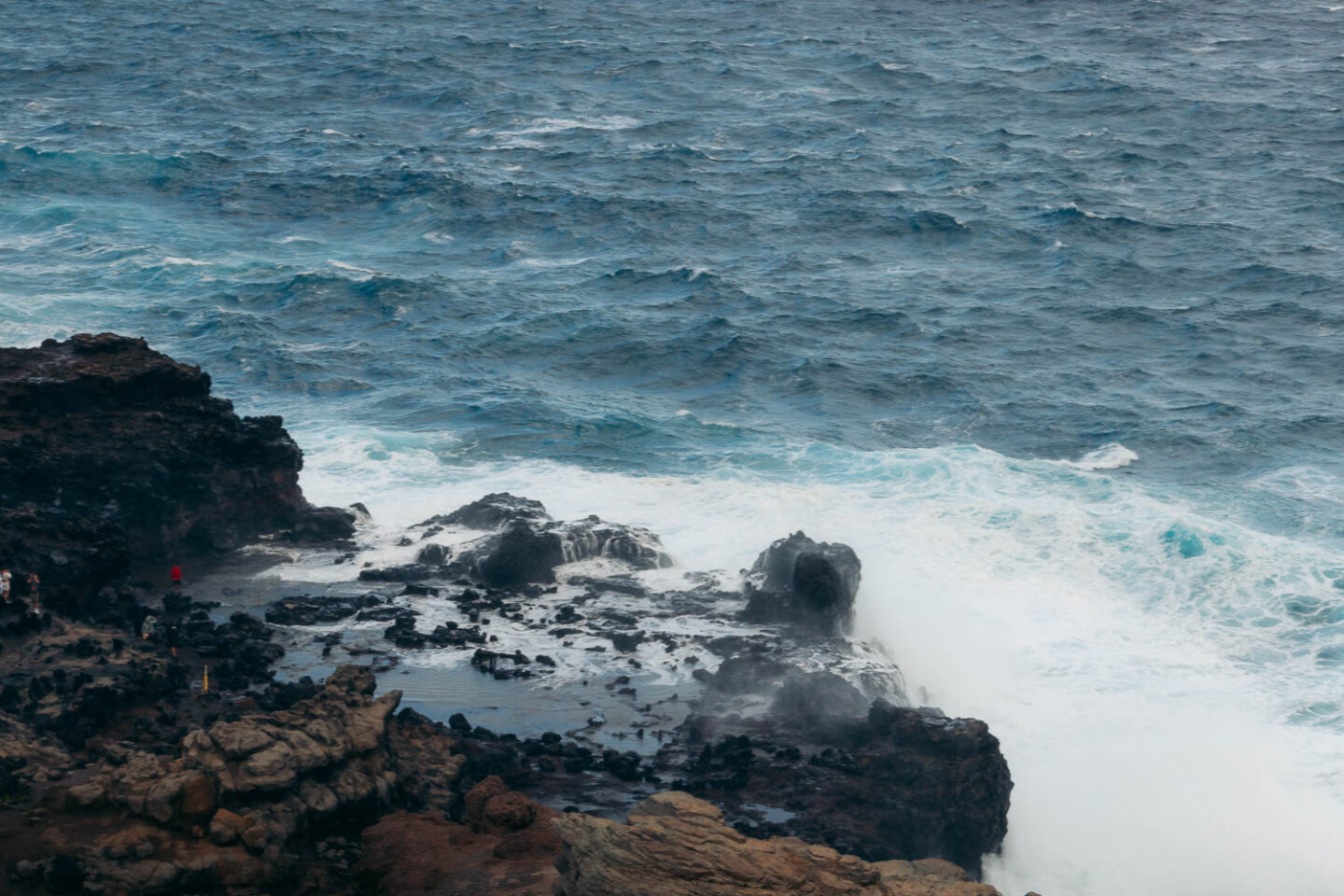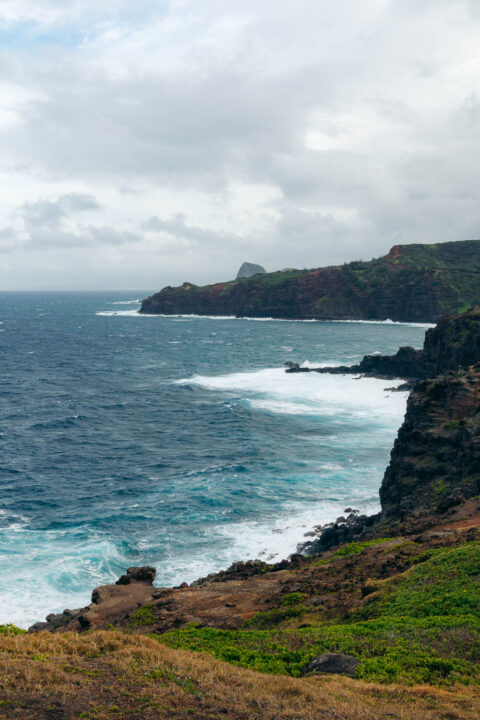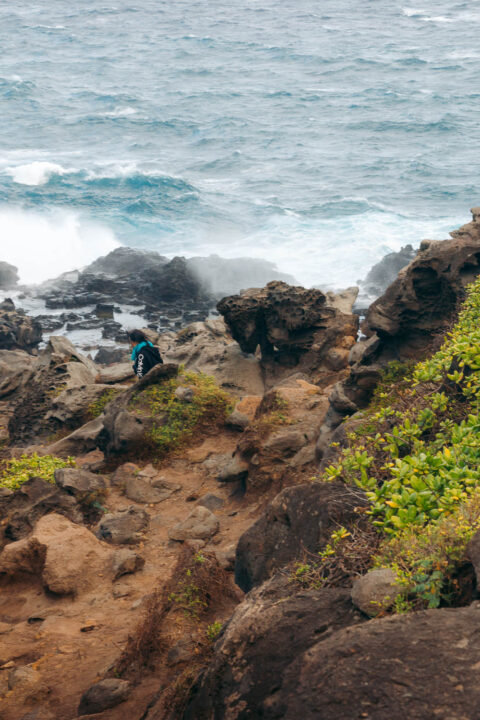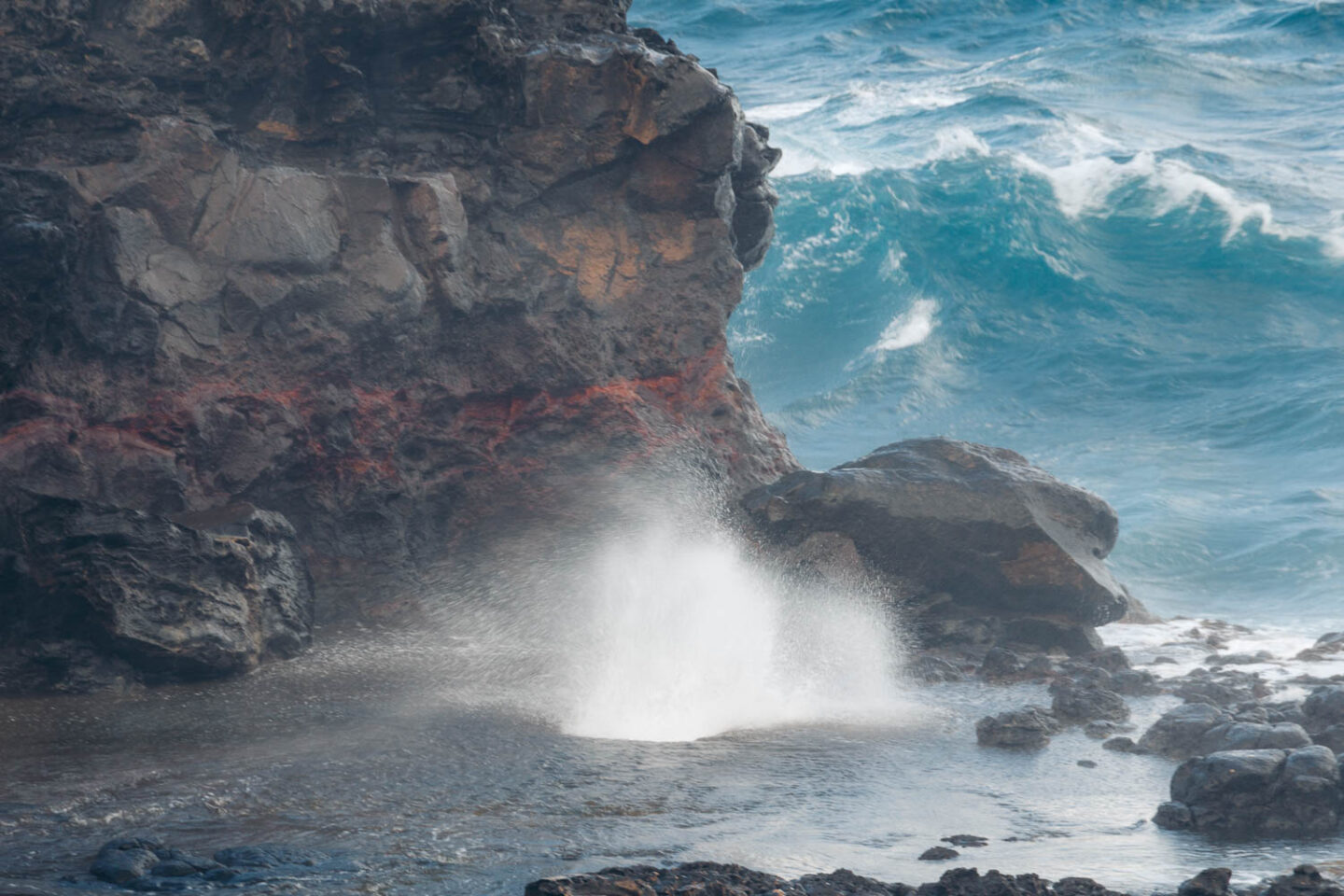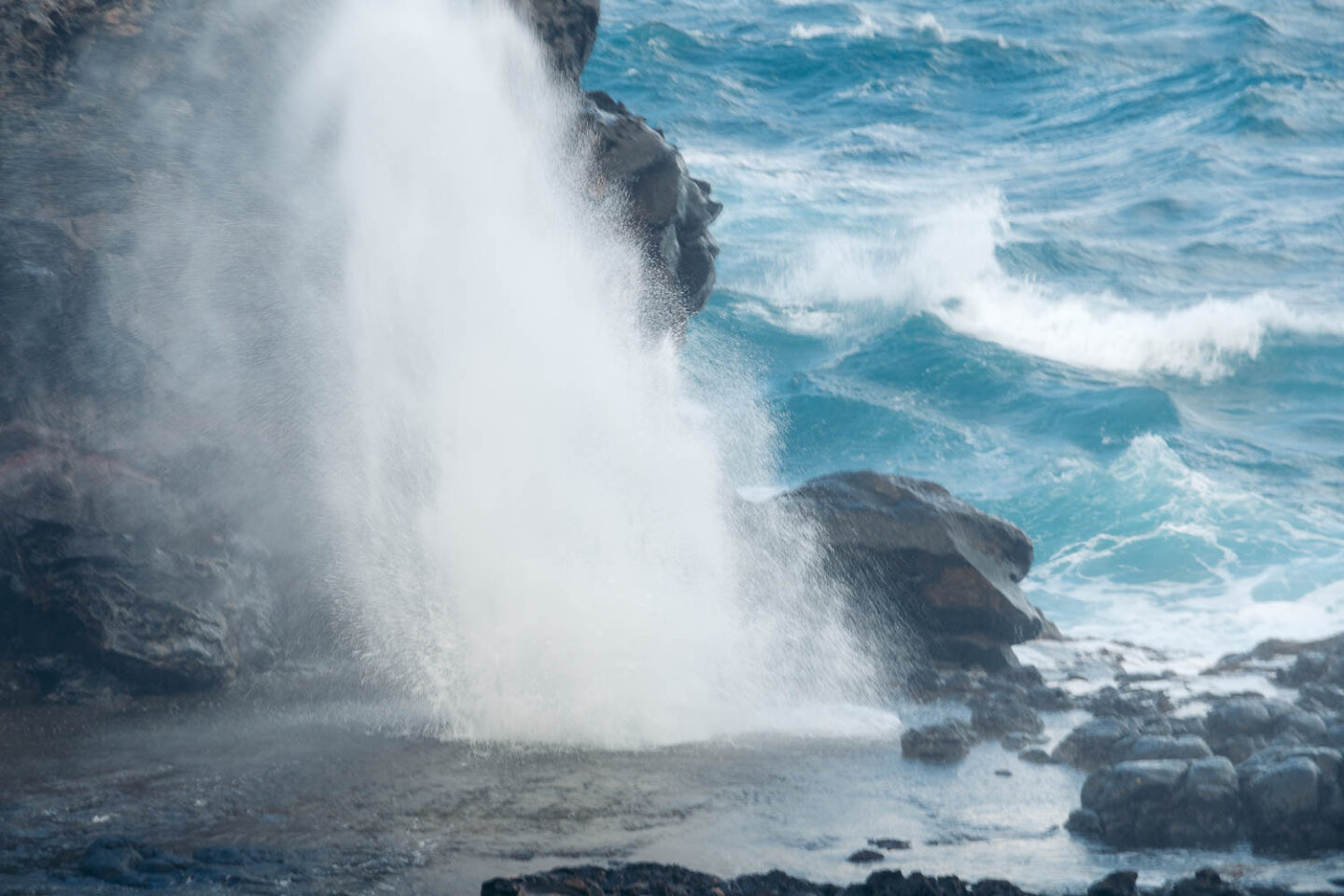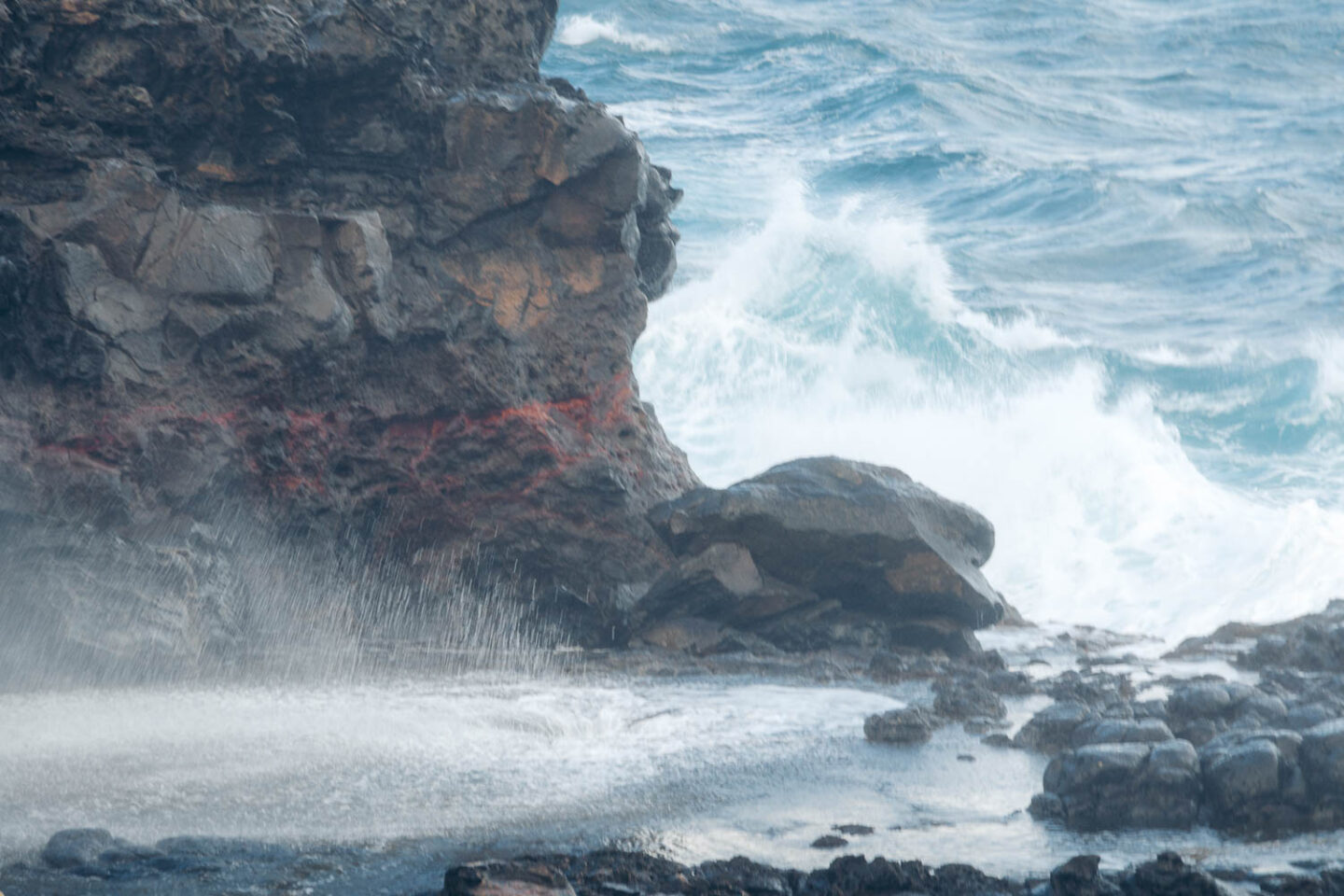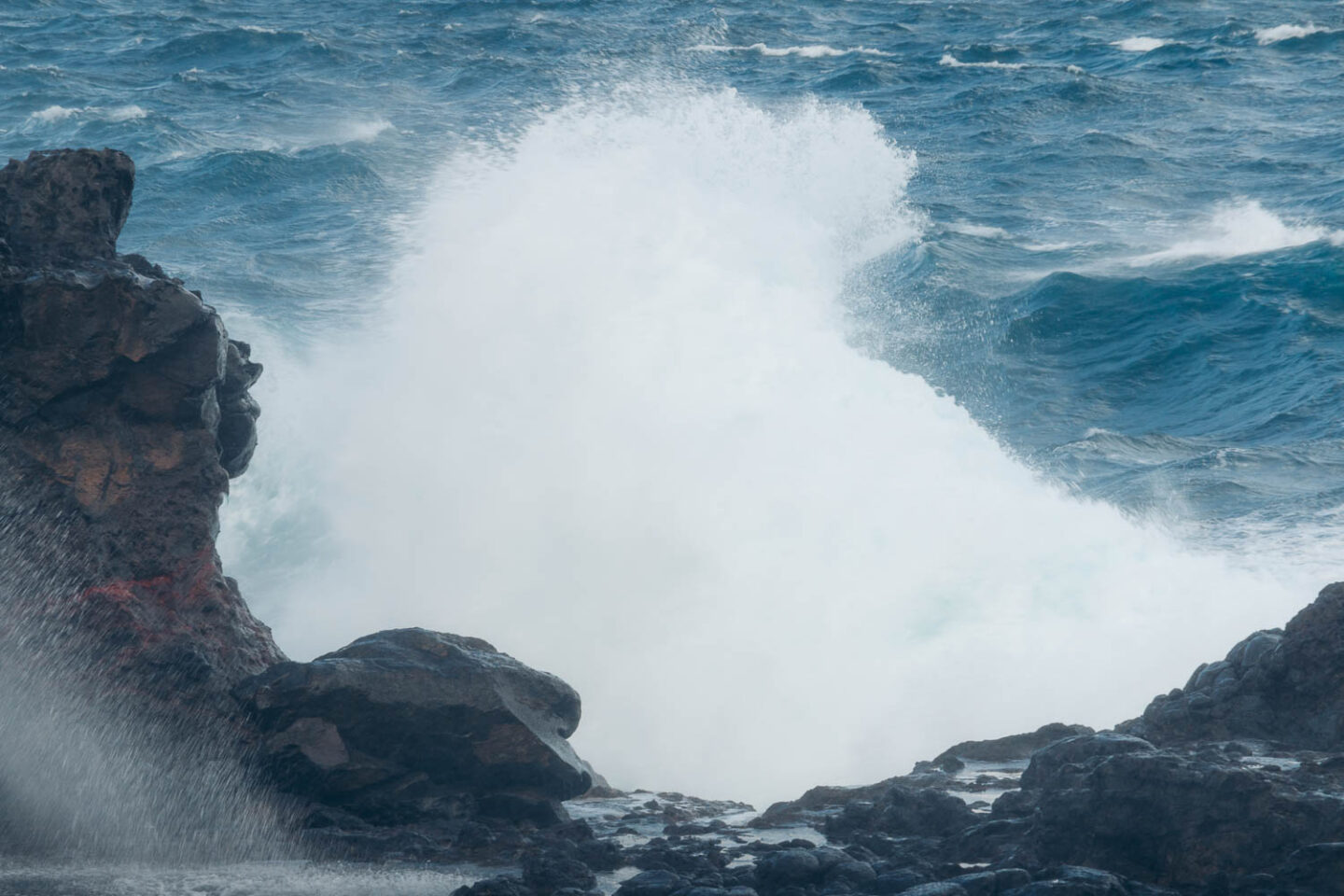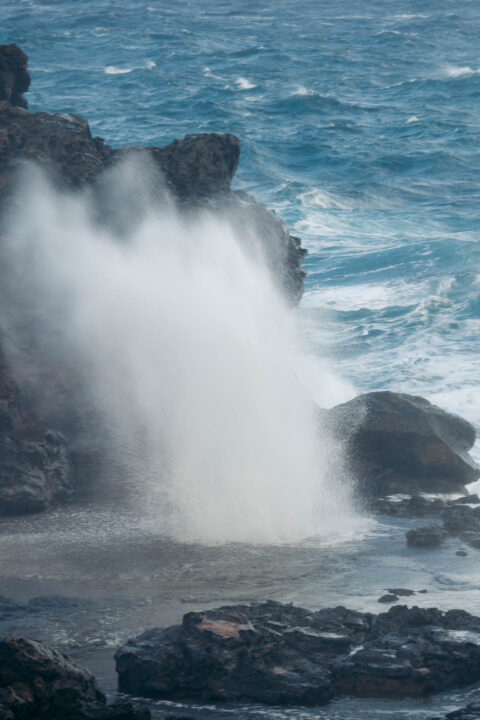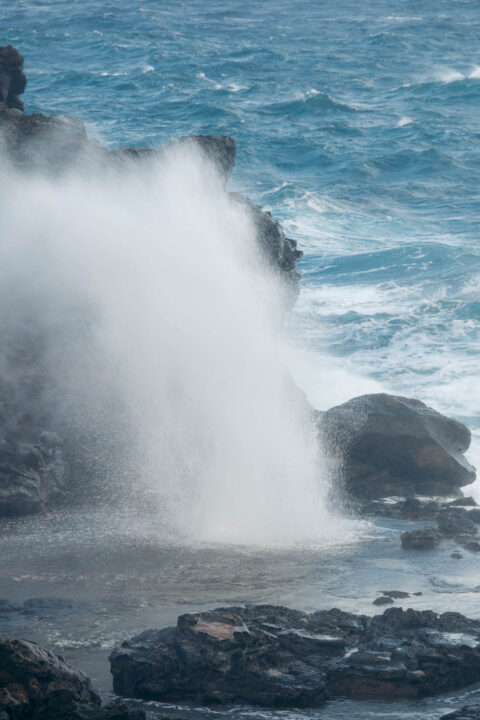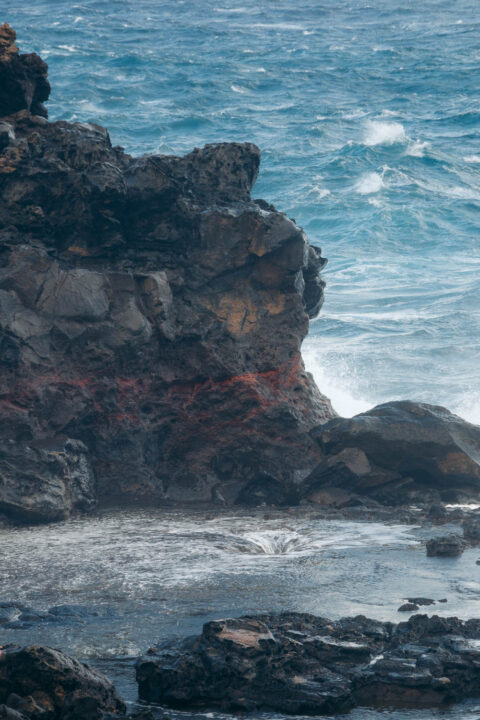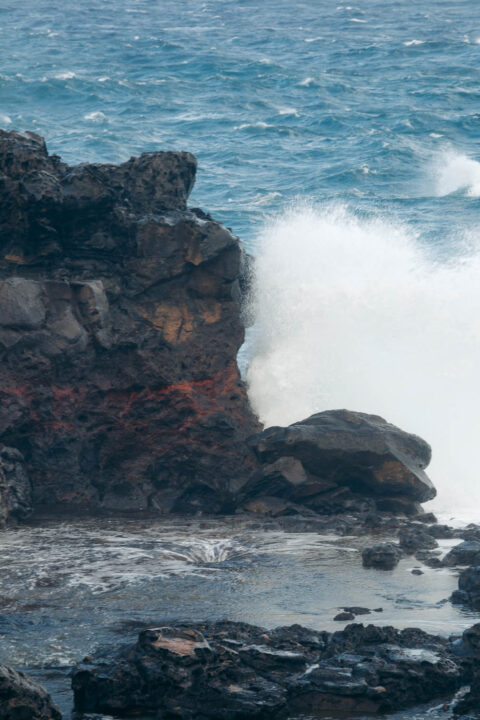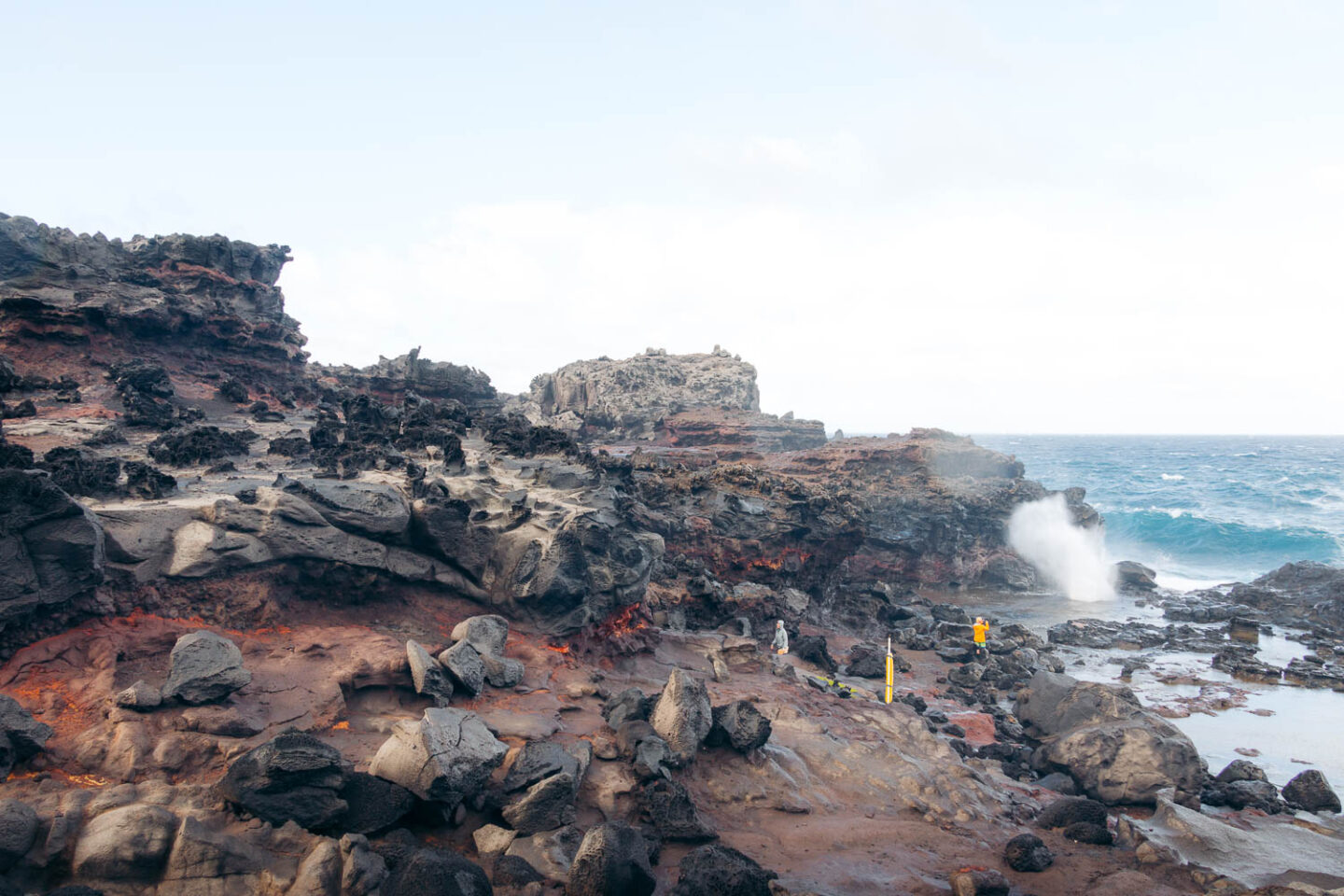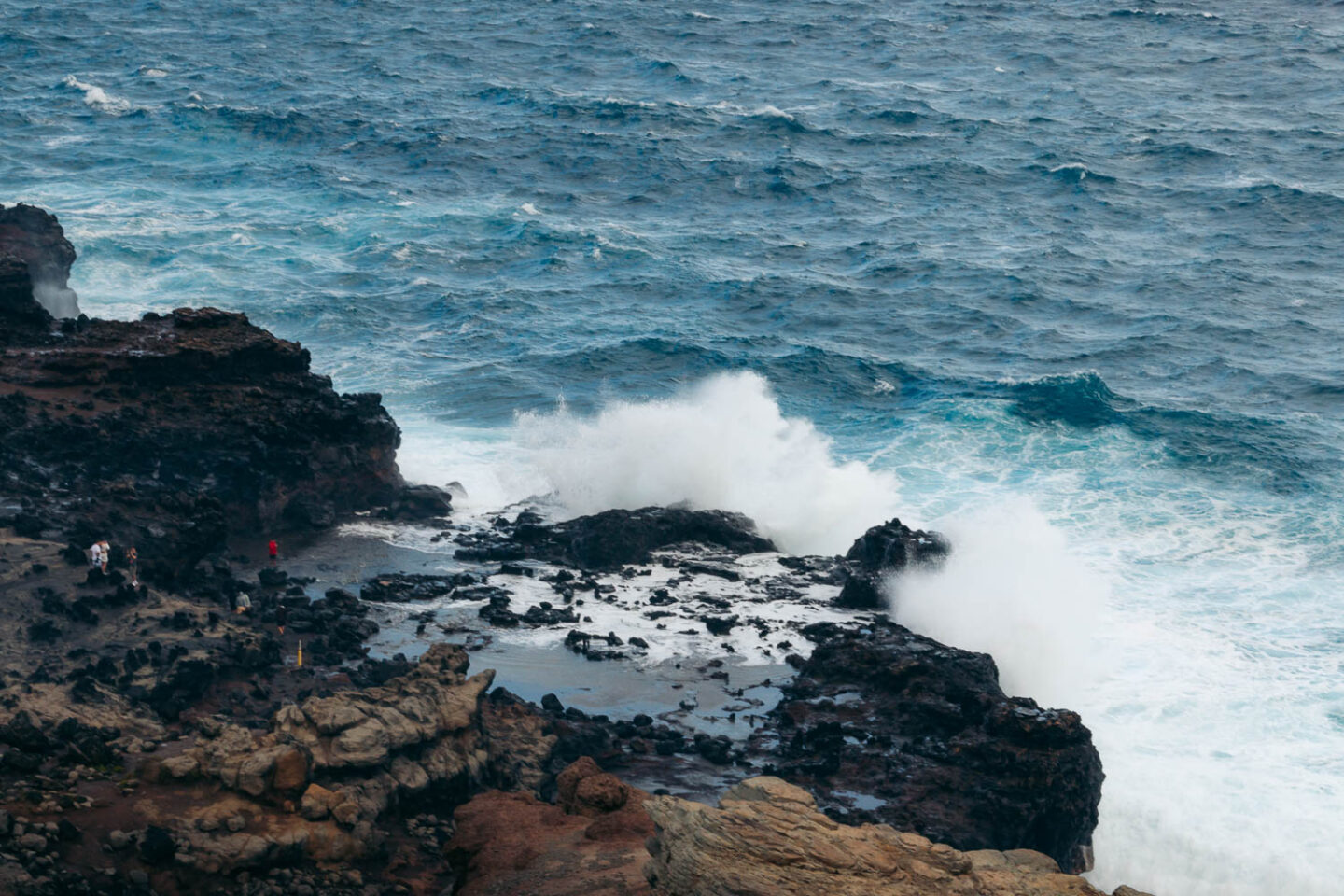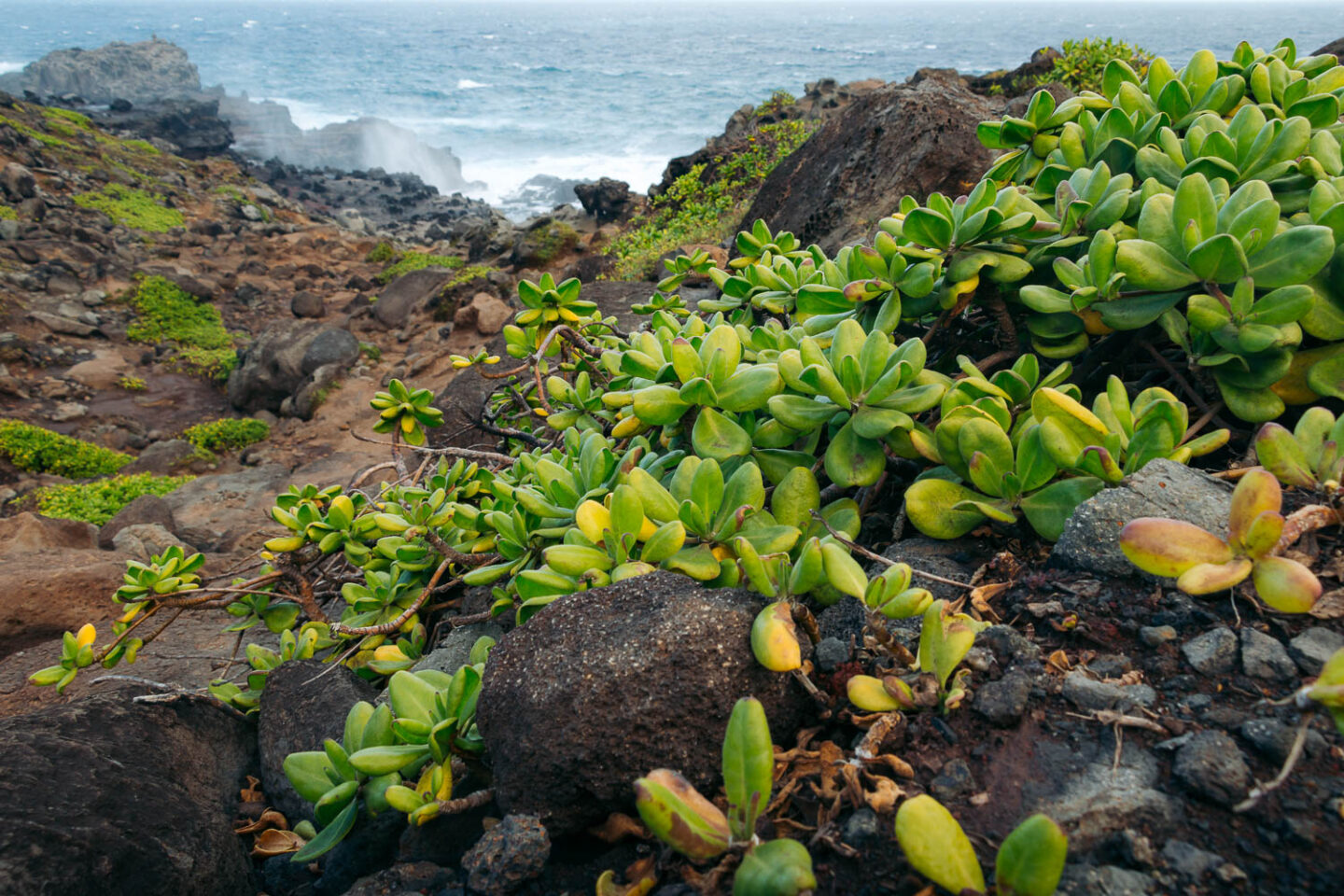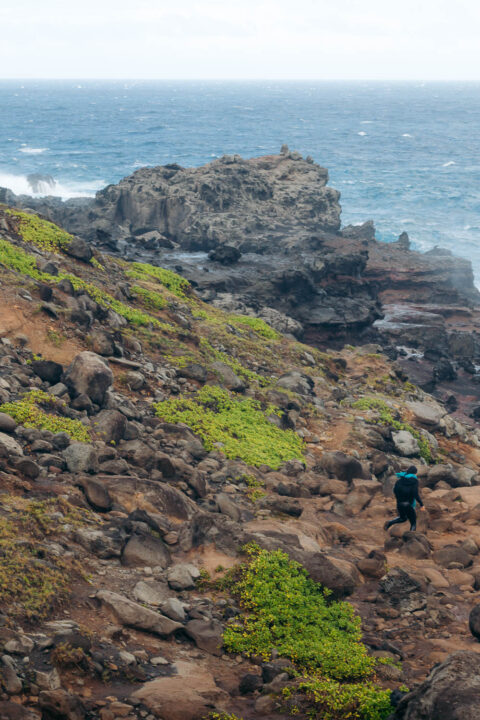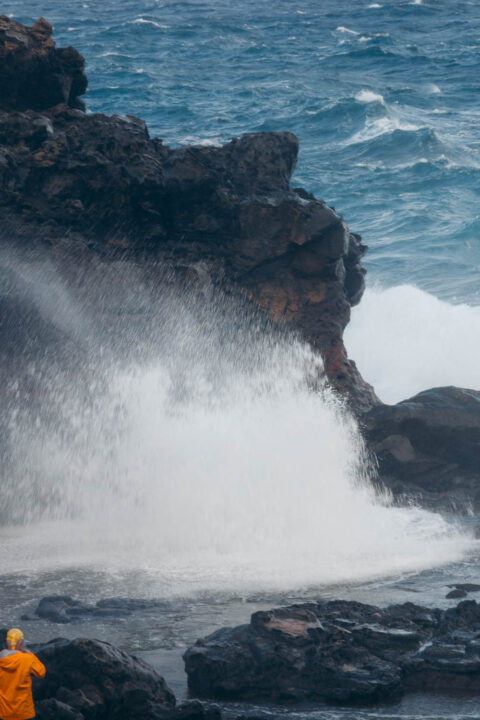Nestled near a highway, Nakalele Blowhole in northeastern Maui is awe-inspiring… and dangerous.
Last updated: November 11, 2023
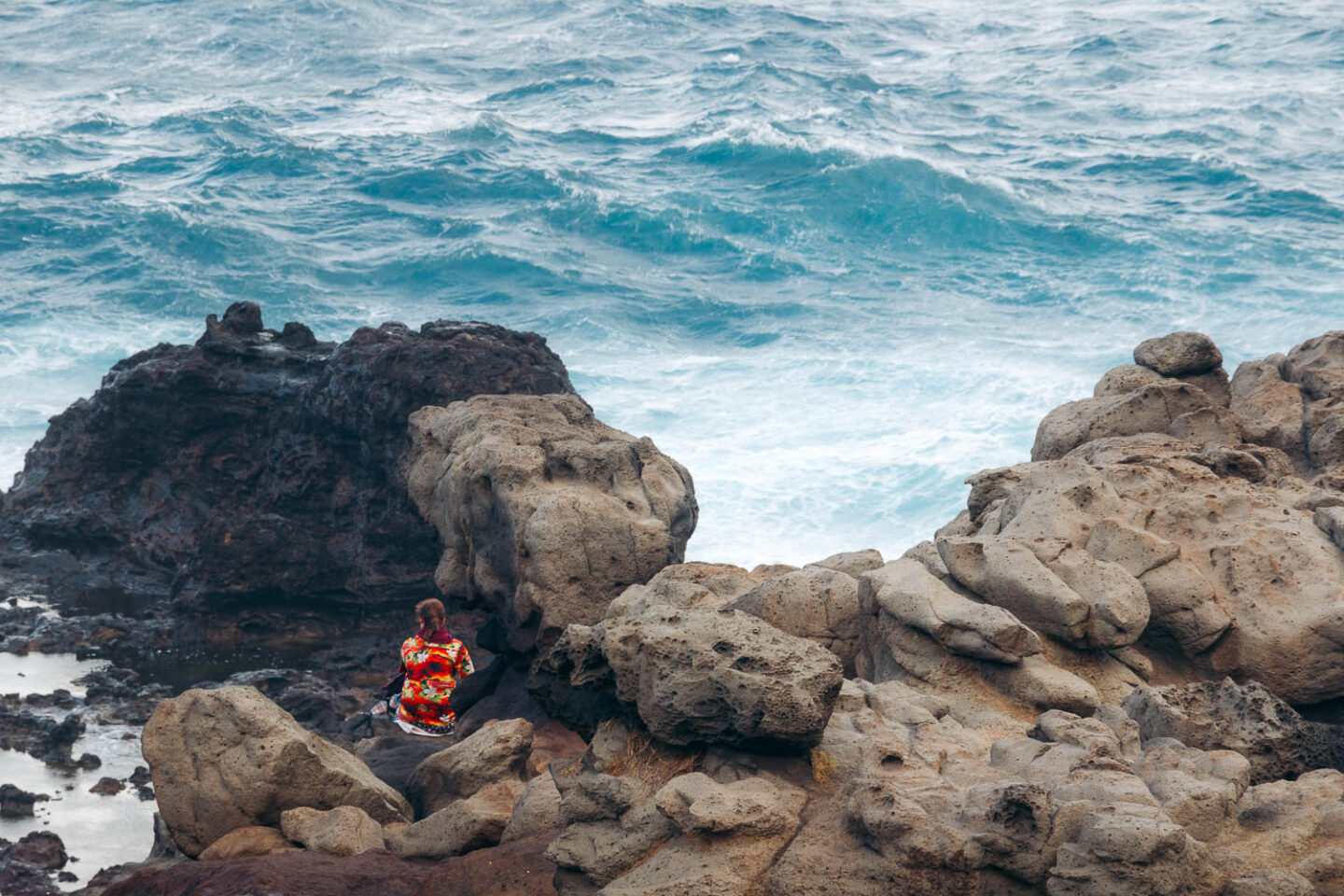
Hawaiian Blowholes
Blowholes on the Hawaiian Islands are considered natural wonders. The spouting “geysers” intrigue and, yes, frighten visitors of Oahu, Maui, Kauai, and the Big Island. Most of the travel guides insist that these massive columns of water spit by the ocean through holes between the rocks are must-visit attractions.
The majority of the travelers follow their advices to a T, without skipping any warnings that say that you should enjoy the Hawaiian phenomena only from a safe distance. A few people, however, still foolishly approach the blowholes and even dance around them. Locals know better the true nature of their islands, and in particular Nakalele Blowhole, though.
A blowhole is a natural opening in the ground that connects to an underground, partially submerged ocean cave or lava tube. When big waves crash on the shore, the water is forced through these small tunnels. Looking for escape, it shoots up like a geyser, through the first opening in the rocks. The Hawaiian blowholes can release water columns that reach more than 50 feet in the air.
Visit Nakalele Blowhole, Maui
Kauai’s Spouting Horn, the first blowhole we saw in Hawaii, was fenced. But even from a distance, the shooting column of water was a sight to behold.
When we went to Maui a few months ago, I naturally wanted to see Nakalele Blowhole. The blowholes were not a novelty for me at that point. But there was something mesmerizing about them, something that made you want to stop and appreciate the beauty and power of nature.
Unlike Spouting Horn, Nakalele Blowhole isn’t fenced. The site is located at Nakalele Point, a land mass on the eastern edge of the northern tip of Maui, along route 30 at mile marker 38 and 38.5. Each of these mile markers has a small roadside parking area with a trail that heads down to the blowhole.
We stopped at the first one, the closest to the “geyser”. The natural wonder was in full view from here. A short, steep trail descended to the shore, winding among the dramatic outcrops along the way. Go down this path if you want to get a better look at Nakalele Blowhole, but never tease it. Never give this astounding natural miracle a chance to show you its dangerous side.
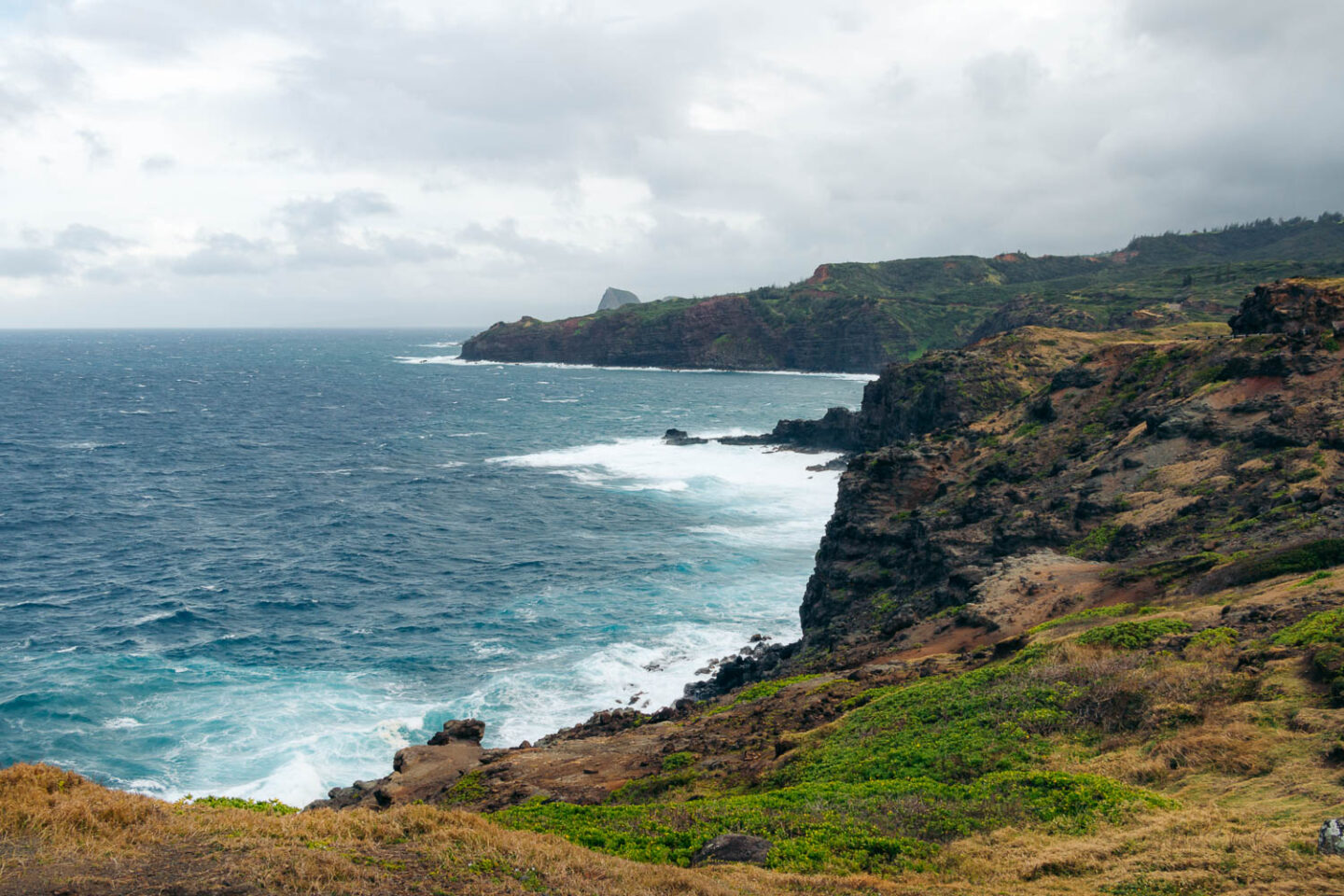
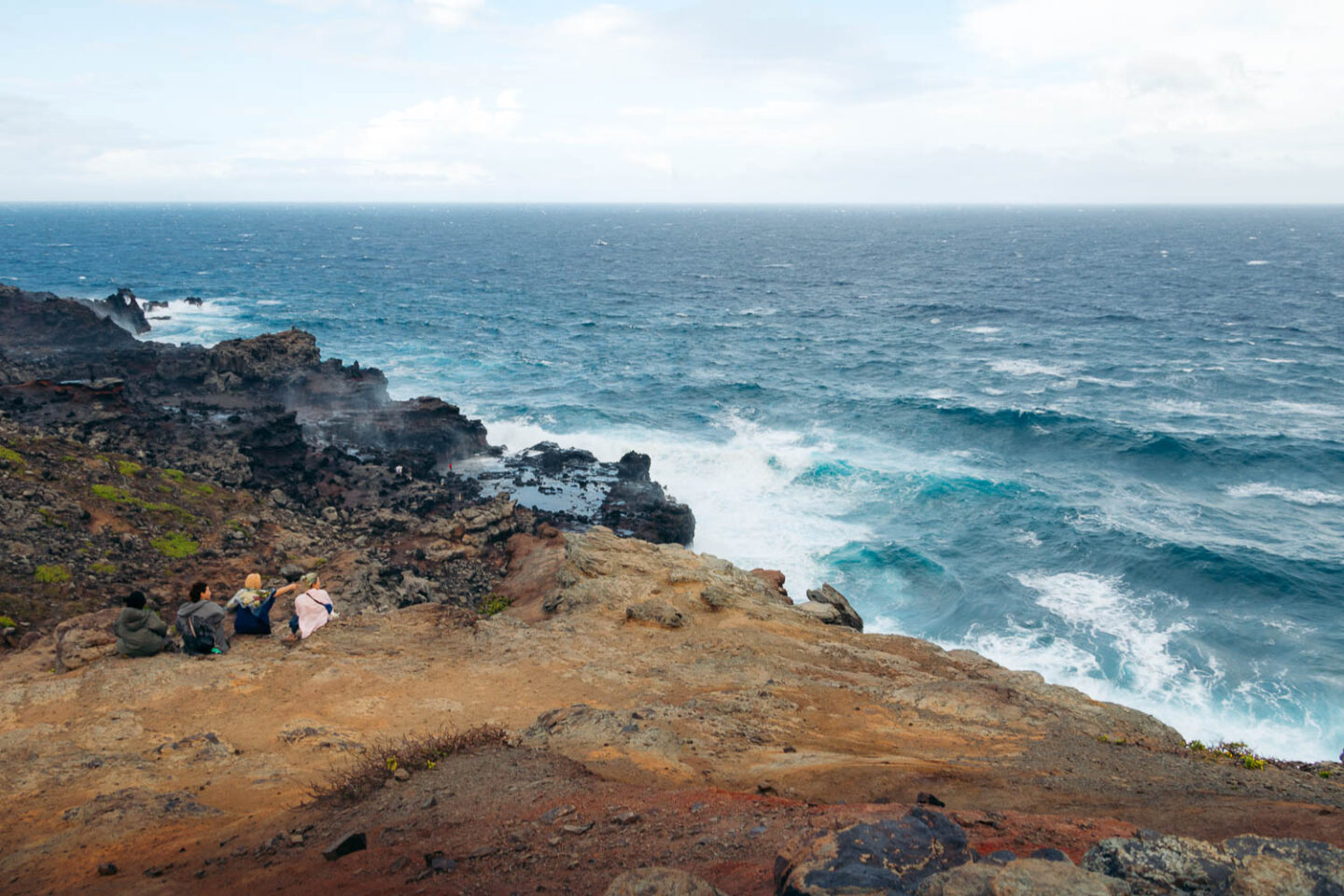
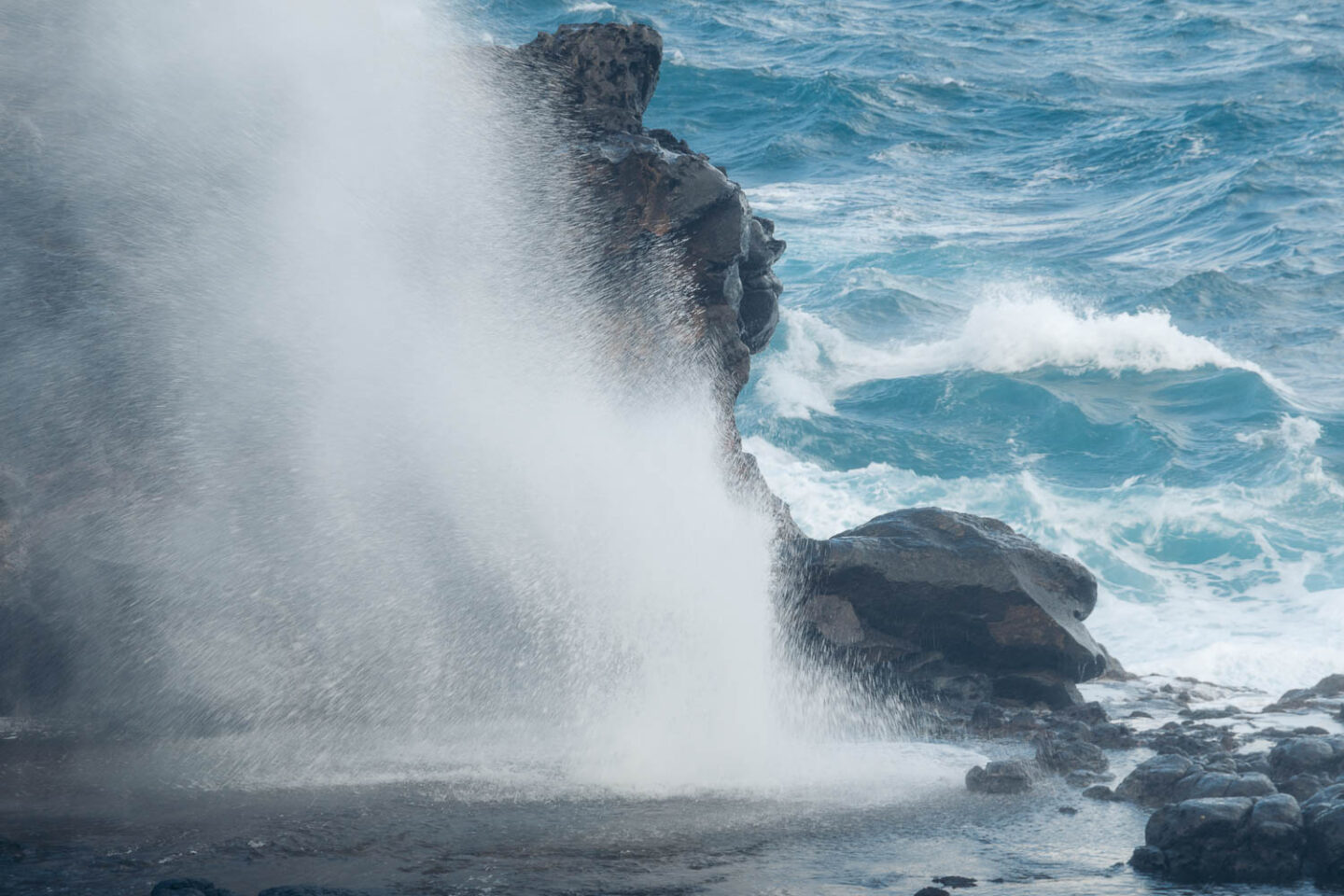
Water Jets
Nakalele Blowhole is famous for its powerful jets of water that shoot periodically into the air. Some “eruptions” are small, splashing thick columns just a foot or less above the ground. Others are large. The water can shoot up to 50 or more feet into the air.
Mist and water drizzles left by the spouting jet spread over a large area. I could feel water drops on my skin from the lava rocks a few dozen feet away from Nakalele Blowhole. With strong wind that kept trying to knock visitors off their feet, and a pretty good view from where I was, I didn’t dare to get any closer. Some hikers did, still keeping a safe distance.
Safety at Nakalele Blowhole
Not restricted by any fences, some oblivious hikers walk up to Nakalele Blowhole, look into it, take those “perfect” pictures of their companions positioned right at the edge of the hole… and occasionally get sucked in. Most of these unlucky visitors don’t make it back…
Beautiful from a distance, Nakalele Blowhole is deadly dangerous up-close. At high tide, even the shore is not safe. Big waves often sweep across the rocks and pull anything and anybody into the ocean.
Nakalele Blowhole Photo Gallery
